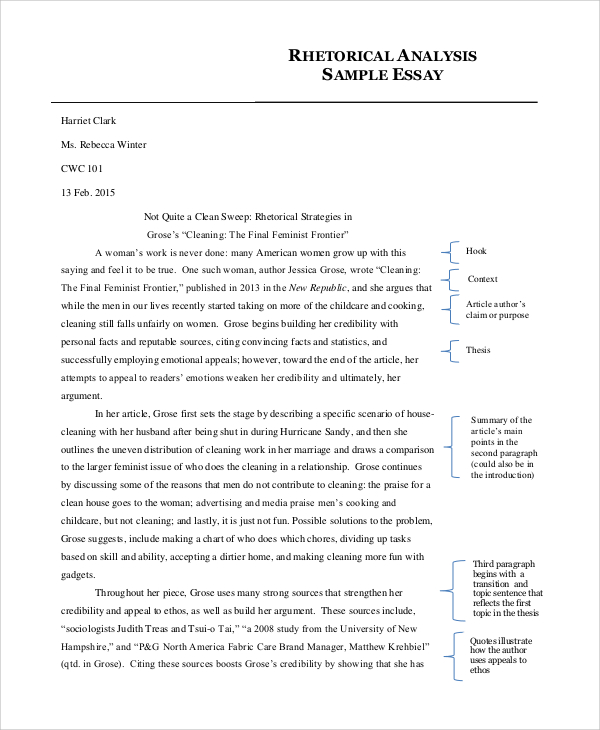
 Additional Resources on the Rhetorical Situation. A Visual Model of the Rhetorical Situation. What Others Say About the Rhetorical Situation. Logical appeals draw on facts, statistics, research, financial costs, observations, and experiments to reach conclusions using logical schema. Logos: Logical appeals use reasoning and evidence to support an argument. Where does the author use language and/or create images that are emotionally charged? Pathos: Emotional appeals draw on the readers’ emotional response to the subject and on shared beliefs and values. Where and how does the author explain his or her related background or establish the credibility of the sources used? How does the writer use each strategy to develop his or her purpose?Įthos: Ethical appeals establish the credibility and goodwill of the author or of the sources used to support an argument. What kinds of evidence did the author include to support his/her point of view, and how was that evidence used?. Why do you think the author included or omitted particular information?. How is the communication organized, and why do you think the author chose this particular organizational pattern? Is there a particular format that is used?. What rhetorical appeals did the writer use? (ethos, pathos, and logos). What style and tone did the author use? Why?. Who was the intended audience and how do they affect the communication?. What do you think was the author’s purpose in producing this communication?. Questions to think about while you read a written communication or listen to an oral communication : analyze how the strategy is working to help the writer achieve his or her purpose. explore how ideas are argued and presented. The purpose of a rhetorical analysis essay is to: Learning to identify rhetorical strategies can help you to 1.) Become a more critical reader, and 2.) Become a more persuasive writer by using effective rhetorical strategies in your own writing. Context/Culture: when was the communication composed? In what environment?Ī rhetorical analysis helps you arrive at an understanding of how a particular writer attempts to persuade his or her audience. Message: content, format, diction/tone, style, etc. Audience: who is the communication intended for? This answers the "who cares?" question. Purpose: what is the goal/intent of the communication? This answers the "so what?" question. To define a “rhetorical situation,” ask yourself this question: “who is talking to whom about what, how, when, where, and why?”
Additional Resources on the Rhetorical Situation. A Visual Model of the Rhetorical Situation. What Others Say About the Rhetorical Situation. Logical appeals draw on facts, statistics, research, financial costs, observations, and experiments to reach conclusions using logical schema. Logos: Logical appeals use reasoning and evidence to support an argument. Where does the author use language and/or create images that are emotionally charged? Pathos: Emotional appeals draw on the readers’ emotional response to the subject and on shared beliefs and values. Where and how does the author explain his or her related background or establish the credibility of the sources used? How does the writer use each strategy to develop his or her purpose?Įthos: Ethical appeals establish the credibility and goodwill of the author or of the sources used to support an argument. What kinds of evidence did the author include to support his/her point of view, and how was that evidence used?. Why do you think the author included or omitted particular information?. How is the communication organized, and why do you think the author chose this particular organizational pattern? Is there a particular format that is used?. What rhetorical appeals did the writer use? (ethos, pathos, and logos). What style and tone did the author use? Why?. Who was the intended audience and how do they affect the communication?. What do you think was the author’s purpose in producing this communication?. Questions to think about while you read a written communication or listen to an oral communication : analyze how the strategy is working to help the writer achieve his or her purpose. explore how ideas are argued and presented. The purpose of a rhetorical analysis essay is to: Learning to identify rhetorical strategies can help you to 1.) Become a more critical reader, and 2.) Become a more persuasive writer by using effective rhetorical strategies in your own writing. Context/Culture: when was the communication composed? In what environment?Ī rhetorical analysis helps you arrive at an understanding of how a particular writer attempts to persuade his or her audience. Message: content, format, diction/tone, style, etc. Audience: who is the communication intended for? This answers the "who cares?" question. Purpose: what is the goal/intent of the communication? This answers the "so what?" question. To define a “rhetorical situation,” ask yourself this question: “who is talking to whom about what, how, when, where, and why?” 
The “rhetorical situation” describes the components of any situation in which you may want to communicate, whether in written or oral form.

It is important to understand how these various mediums attempt to persuade audiences by using appeals to rhetoric.Īs we discussed in COM 1010, in order to understand how rhetoric is used in any form of communication, we need to understand the rhetorical situation of that communication.īelow, you can see the components that shape the rhetorical situation of a text. Rhetoric is everywhere and can involve any kind of text including speeches, written arguments (such as columns, editorials, essays, etc.) images, movies, documentaries, news reports and more. Rhetoric is commonly defined as “the art of persuasion.” Rhetorical tools give us the means to sway our audience and to persuade them to invest in our argument.







 0 kommentar(er)
0 kommentar(er)
